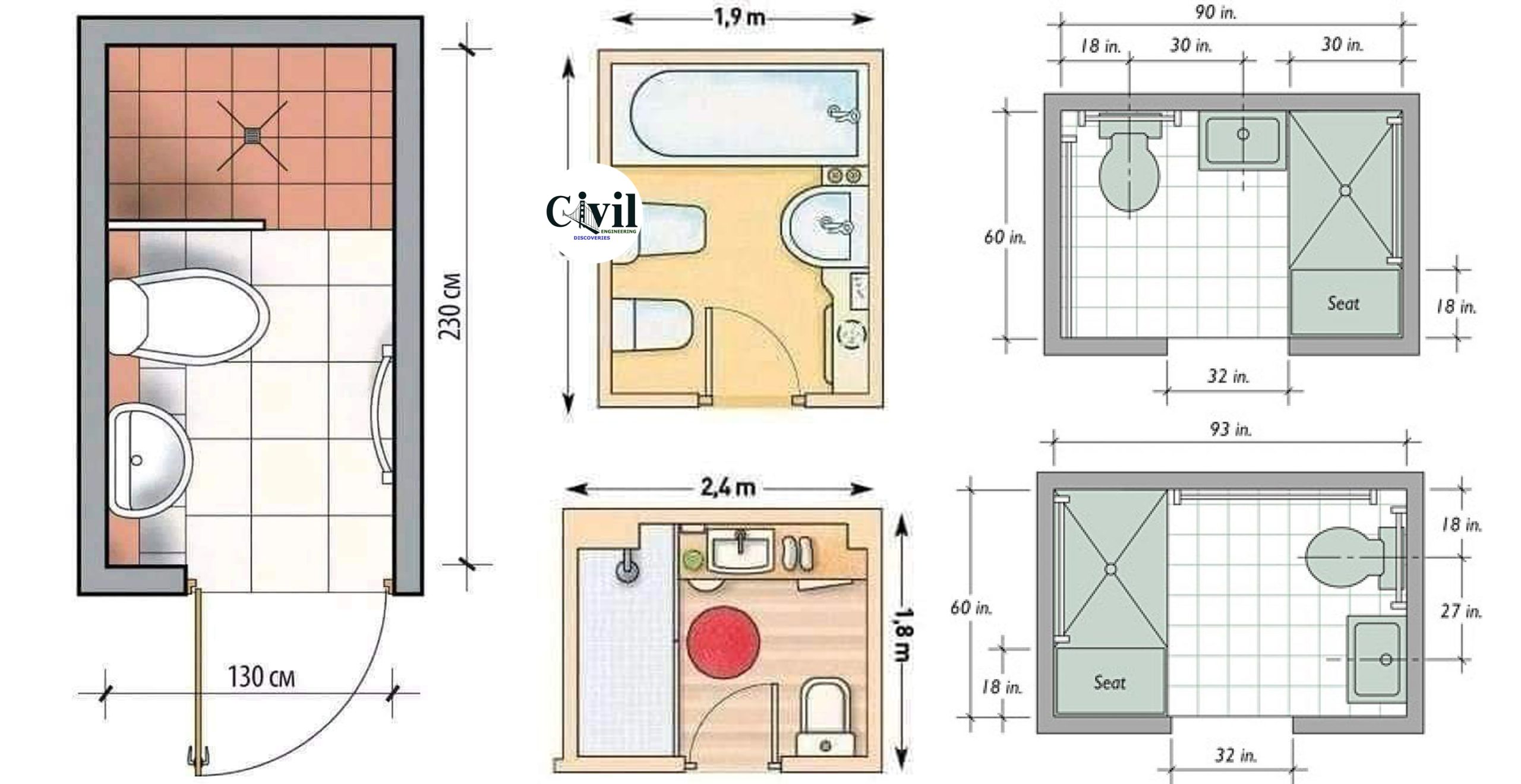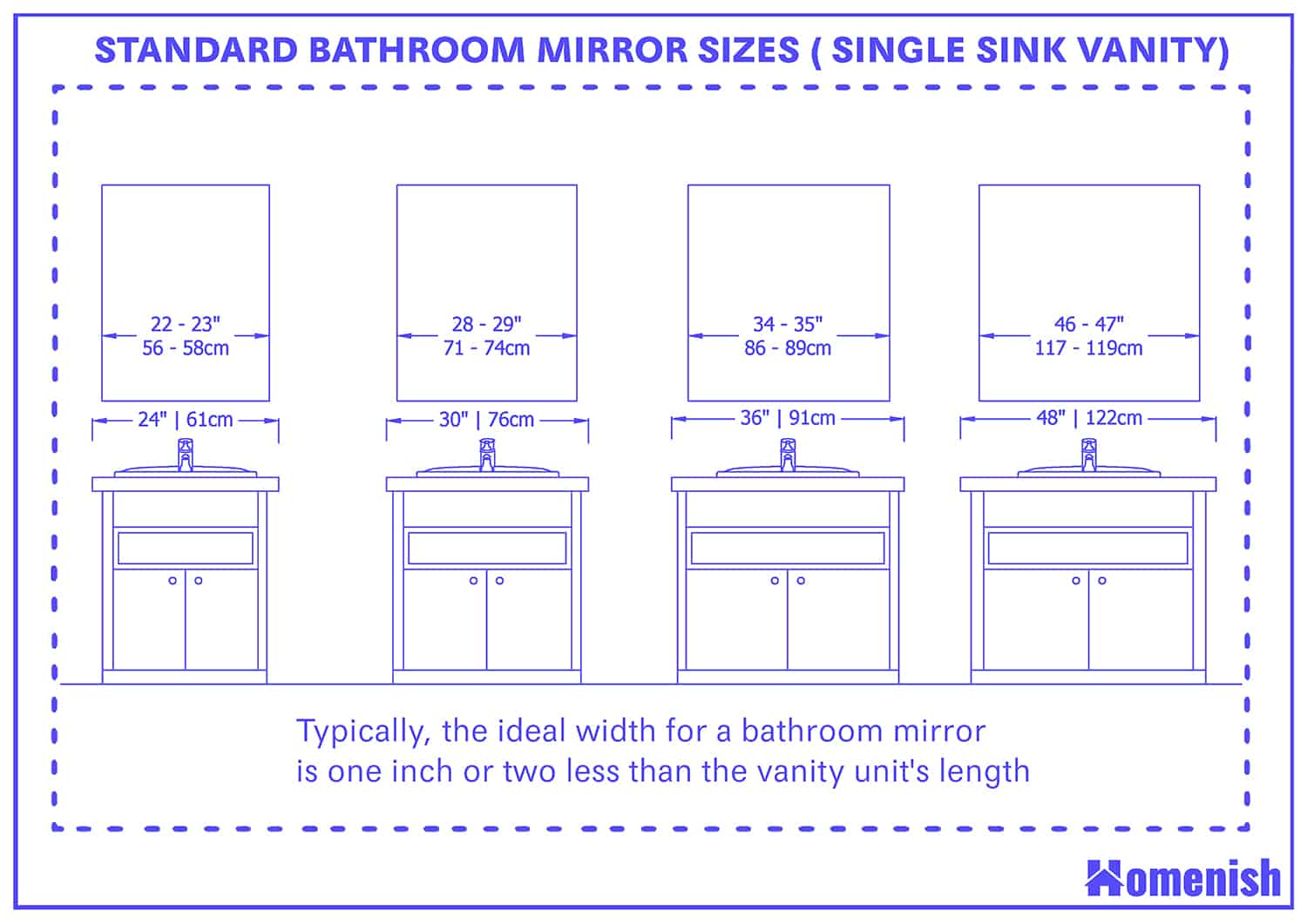Standard Bathroom Vanity Sizes

Choosing the right size bathroom vanity is crucial for both functionality and aesthetics. A well-sized vanity ensures ample counter space, sufficient storage, and a balanced visual appeal within your bathroom. This guide will help you navigate the world of vanity dimensions and find the perfect fit for your space.
Common Bathroom Vanity Sizes
The standard bathroom vanity size typically falls within a specific range, with variations based on the number of sinks and intended use. Here’s a table outlining the common dimensions for single, double, and triple sink configurations:
| Configuration | Width | Depth | Height | Single Sink | 24" – 36" | 18" – 22" | 30" – 36" | Double Sink | 48" – 72" | 18" – 22" | 30" – 36" | Triple Sink | 72" – 96" | 18" – 22" | 30" – 36" | <blockquote>Note: These dimensions are general guidelines. Actual vanity sizes can vary based on manufacturer and design.</blockquote>
<h3>Standard Vanity Widths for Different Bathroom Sizes</h3> * Small Bathrooms: 24" – 36" <h3>Vanity Dimensions for Different Bathroom Layouts</h3> |
Layout | Vanity Type | Width | Depth | Height | Small Bathroom | Single Sink | 24" – 30" | 18" – 22" | 30" – 36" | Medium Bathroom | Double Sink | 48" – 60" | 18" – 22" | 30" – 36" | Large Bathroom | Triple Sink | 72" – 96" | 18" – 22" | 30" – 36" | Corner Bathroom | Corner Vanity | 36" – 48" | 18" – 22" | 30" – 36" | Wall-Mounted Bathroom | Wall-Mounted Vanity | 24" – 60" | 18" – 22" | 30" – 36" |
|---|
Factors Influencing Vanity Size Selection

Choosing the right vanity size is crucial for creating a functional and aesthetically pleasing bathroom. A vanity that’s too small will leave you cramped and struggling for space, while one that’s too large can make the bathroom feel overwhelming and cluttered. The key is to find a balance that meets your needs and complements the overall design of your bathroom.
Bathroom Size and Layout
The size and layout of your bathroom play a significant role in determining the ideal vanity size. A small bathroom will require a smaller vanity to avoid overcrowding, while a larger bathroom can accommodate a more spacious vanity. Consider the available wall space, the position of the door, and the location of other fixtures, such as the toilet and shower. For instance, in a narrow bathroom, a narrow vanity with a single sink might be the best option, while a wider vanity with a double sink might be suitable for a larger bathroom.
Sink Type
The type of sink you choose will also influence the size of the vanity you need. Single sinks are typically found on smaller vanities, while double sinks require a larger vanity to accommodate both basins. Vessel sinks, which sit on top of the countertop, can be incorporated into various vanity sizes.
- Single Sinks: These are the most common type of sink and are suitable for smaller bathrooms. They require less space and are ideal for individuals or couples who don’t need a lot of counter space.
- Double Sinks: Double sinks are ideal for larger bathrooms and families. They provide ample counter space and allow two people to use the vanity simultaneously. Double sinks typically require a vanity that is at least 60 inches wide.
- Vessel Sinks: Vessel sinks are stylish and contemporary but require a vanity with a deeper countertop to accommodate the bowl. The size of the vessel sink will determine the overall size of the vanity.
Freestanding vs. Wall-Mounted Vanities, Average size of a bathroom vanity
Freestanding and wall-mounted vanities have different space requirements.
- Freestanding Vanities: These vanities stand on their own legs and require more floor space than wall-mounted vanities. They offer a more traditional look and can be placed anywhere in the bathroom. The size of the vanity will depend on the number of drawers and cabinets, as well as the size of the sink.
- Wall-Mounted Vanities: Wall-mounted vanities are suspended from the wall, freeing up floor space. They are ideal for smaller bathrooms or bathrooms with limited floor space. The size of the vanity will depend on the width of the wall and the desired amount of counter space.
Vanity Size Considerations for Specific Bathroom Styles: Average Size Of A Bathroom Vanity

Choosing the right vanity size isn’t just about fitting your bathroom’s dimensions; it’s also about creating a cohesive and aesthetically pleasing look. The style of your bathroom plays a significant role in determining the ideal vanity size.
Vanity Size Recommendations for Different Bathroom Styles
The size of your vanity should complement the overall style of your bathroom. Here’s a table outlining recommended vanity sizes for popular bathroom styles:
| Bathroom Style | Recommended Vanity Size | Explanation |
|---|---|---|
| Traditional | 60-72 inches | Traditional bathrooms often feature ornate details and a sense of grandeur. A larger vanity with double sinks or ample storage space aligns with this aesthetic. |
| Modern | 48-60 inches | Modern bathrooms prioritize clean lines and minimalist design. A sleek vanity with a compact footprint and streamlined storage options is ideal. |
| Contemporary | 42-54 inches | Contemporary bathrooms blend modern and traditional elements. A vanity with a mid-range size and a focus on functionality and stylish design works well. |
Influence of Bathroom Fixtures and Decor on Vanity Size
Bathroom fixtures and decor can influence the overall look and feel of a bathroom, impacting the selection of vanity size.
- Shower Size: A large shower typically requires a larger vanity to maintain balance and prevent the bathroom from feeling cramped.
- Tub Size: A large soaking tub may require a smaller vanity to avoid overwhelming the space.
- Lighting: A large vanity can accommodate more lighting fixtures, enhancing the overall ambiance and functionality of the bathroom.
- Storage Needs: If you have a lot of bathroom essentials, a larger vanity with ample storage space is essential.
Examples of Vanity Size Impact on Bathroom Aesthetics and Functionality
The size of the vanity significantly influences the overall aesthetic and functionality of a bathroom.
- Small Bathroom: In a small bathroom, a compact vanity helps maximize floor space and creates a sense of openness. A smaller vanity can be paired with a wall-mounted mirror to visually enlarge the space.
- Large Bathroom: A larger vanity in a spacious bathroom provides ample counter space and storage. This allows for a more luxurious and functional bathroom experience.
- Master Bathroom: Master bathrooms often feature larger vanities with double sinks, providing convenience and comfort for two people. This can create a more inviting and spa-like atmosphere.
